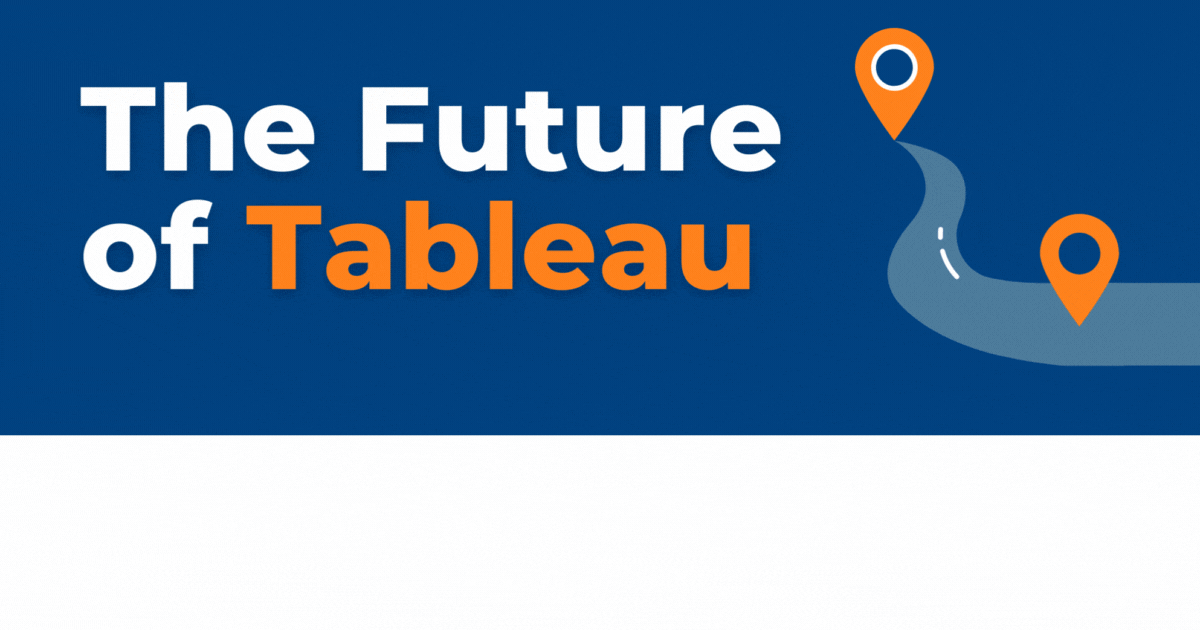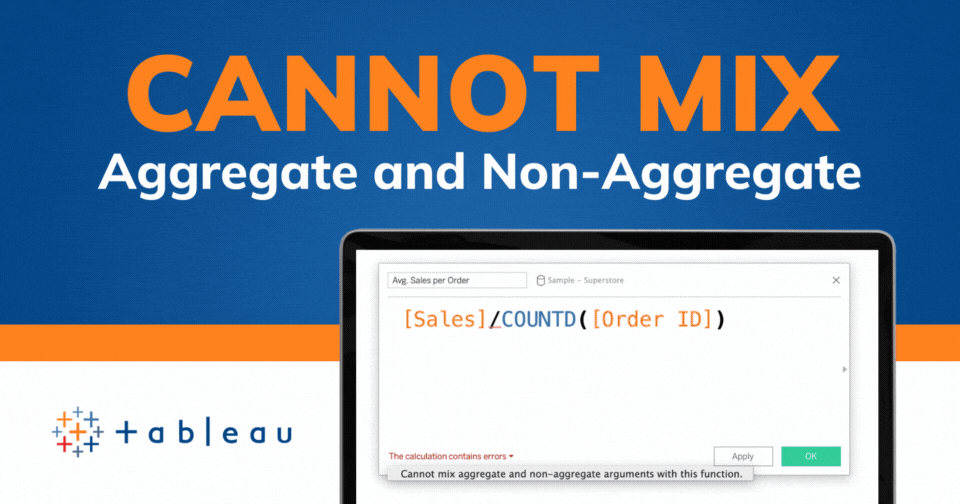Tableau Conference 2025 | Know Before You Go
If you’re a data enthusiast, analytics professional, or just someone curious about Tableau’s latest innovations, the Tableau Conference 2025 is your...
7 min read
 Luke Komiskey
May 15, 2023
Luke Komiskey
May 15, 2023

The Tableau Conference 2023 has come to a close, leaving data enthusiasts buzzing with excitement, curiosity, and perhaps a bit of apprehension about the future of Tableau, self-service analytics, and interactive dashboards as we know it.
The Tableau Conference shed light on new product innovations and directions, marking the beginning of a new chapter for Tableau aptly named ‘A New Day for Data.’ In this post, I’ll dive into the highlights of the #DataFam annual event, explore the future of Tableau, and discuss what these changes might mean for users and organizations alike.
I’ll start by saying that this was my 8th Tableau Conference, and my agenda is much more open-ended than others trying to make the most of learning during the informational sessions hosted through the 3-day event at Mandalay Bay. Everyone’s conference experience varies, but there are no doubt common themes I’ve heard across conversations and social media.
For the past few years, the in-person Tableau Conference has been hosted at Mandalay Bay, Las Vegas, as it has the hotel and convention center to host a large event of data enthusiasts. Tableau and Salesforce held off announcing conference logistics, official dates, and registration forms until only a few months before it actually happened. After announcing a 2-day conference, Tableau quickly came back with the traditional 3-day conference schedule after community backlash. Kudos to Tableau/Salesforce for taking ownership and adjusting!
This year's conference attendees were significantly lower than in pre-COVID times, with around (guessing) 6k-8k participants compared to the 15k+ before the pandemic. The reduction in attendees made the event feel more manageable and intimate, allowing for better engagement within the Tableau community.
Despite being a highly anticipated event, Tableau Conference 2023 was not without its logistical challenges. Many attendees found it difficult to attend all the learning sessions they wanted, as they were spread across the 1st and 3rd floors of the venue. This layout made it nearly impossible for people to navigate between sessions and lunch breaks seamlessly.
While I didn’t attend sessions at the conference, I heard a common theme of disappointment from first-time attendees hoping to pack a lot of learning in 3 days. They felt underserved, and I hope Tableau - who has struggled with similar over-booked sessions at past conferences - uses a more data-driven approach to either ramp up available sessions or create an experience where people feel like they achieve 70%+ of their intended conference learning plan.
All that to say - I’m incredibly excited that Tableau Conference #Data24 will be hosted in San Diego, California. The data conference of the year is due for a change of scenery.
Salesforce noticeably toned down its Salesforce-centric marketing and product push within the Data Village expo hall and customer sessions compared to previous years. This shift was a welcome change, as it allowed the focus to remain on Tableau and its offerings vs. trying to force a Salesforce product offering on developers and business analysts. There is a balance of community vs. product and I think Salesforce took a much-needed step towards (re-)capturing the hearts of Tableau fans.
Despite the challenges and the lingering uncertainty around Tableau's future, the conference was infused with enthusiasm and camaraderie. It was evident that (most of) the Tableau community is eager to embrace the changes ahead and adapt to the evolving world of data analytics. As a regular conference attendee, I really enjoyed this year’s conference and I hope Salesforce can take note of the disappointment from new attendees on session availability.
There is no shortage of speakers (including myself) willing to give the data community what they want!
One of the most groundbreaking announcements at the conference was the introduction of Tableau GPT, a generative artificial intelligence (AI) solution designed to revolutionize data analytics. With Tableau GPT, the traditional approach of manual dashboard building may soon be a thing of the past, as AI-powered tools streamline the process and make data analysis more accessible to a wider audience.
With the explosive growth of chatGPT since the beginning of the year, it’s smart for Tableau to capture the target audience of non-technical users using AI prompts to find answers in their daily lives. You can’t ignore the huge growth of large language models and their use cases within analytics.
The shift towards AI-driven data analytics signifies a major change in how organizations utilize Tableau. Dashboard development roles will likely (and should) evolve, with a greater emphasis on analytics engineers who can train large language models (LLMs) on organizational data and business analysts translating insights for decision-makers.
As AI continues to shape the future of analytics, the roles within the industry will need to adapt. Individuals who are currently focused solely on dashboard design may need to expand their skill sets and embrace the new possibilities that AI brings to the table. Dashboards were created as the fastest, visual way to create ‘surface area’ for discovering new insights. The whole intent of self-service analytics was to allow anyone to find patterns in big, complex data sets - Tableau GPT speeds up that discovery process and the entire world is adopting AI (quickly).
For those who primarily use Tableau for dashboard design, the rise of AI may be daunting. I overheard a few people worried about how their dashboard development job may be at risk. However, embracing the changes and the potential benefits they offer will be crucial to staying relevant and competitive in the evolving data landscape and better deliver on the promise of self-service analytics - creating insights for anyone to access.
Headless BI, also referred to as API-first BI, represents a shift in business intelligence solutions that prioritize flexibility, scalability, and customization. This approach essentially decouples the front-end visualization layer from the back-end data processing and analytics engine.
The rise of headless BI is a response to the growing complexity and diversity of the modern data stack. As organizations leverage an ever-increasing number of data sources, tools, and platforms, the need for a more flexible and adaptable BI solution becomes paramount. Headless BI enables businesses to create seamless data-driven experiences. This approach reduces the friction for end-users and allows organizations to harness the full potential of their data by creating highly targeted and context-specific analytical experiences.
Headless BI allows developers to build, embed, and integrate analytics capabilities directly into their applications, websites, or platforms using APIs. This grants organizations the freedom to create highly customized and tailored data experiences for their users, without being confined to the limitations of traditional, out-of-the-box BI tools.
Embracing headless BI as part of the Tableau product strategy is crucial for maintaining relevance in today's rapidly evolving ‘modern data’ landscape. And until recently, Tableau was always a black box of functionality that queried data ‘magically’. With VizQL Data Service, we have a really compelling offering.
This new offering will allow organizations to leverage the power of VizQL programmatically, opening up new possibilities for self-service analytics and embedded use cases. By exposing the power of VizQL through a simple programming interface, developers can build new data products without the need for extensive data expertise, making Tableau a more appealing option for a wider range of use cases.
By offering greater flexibility and control, Tableau is positioning itself as a more adaptable and versatile tool in the modern data stack. I approve of this move - big time.
Data Cloud is Salesforce and Tableau's ambitious attempt to simplify data management and analytics. By enabling organizations to build complex datasets with Salesforce data readily available, Data Cloud aims to streamline the data analysis process, particularly for Salesforce-heavy environments wanting real-time analytics.
While Data Cloud's concept is really appealing, I am a bit concerned about Salesforce being a bit late to the game on cloud ETL/warehousing solutions and the assumed pricing on this massive capability. These uncertainties make it difficult for me to gauge the long-term success, especially given the existing competition in the cloud ETL space.
Salesforce's entry into the cloud ETL market raises questions about whether it can effectively compete with established players. While Salesforce has the advantage of a large customer base already using the Salesforce platform, I also wonder if those large organizations have already created a more cost-effective and holistic solution with other modern data stack tools. Salesforce Data Cloud seems very much aimed at enterprise deployments that have likely been working on their cloud data strategy for years.
Instead of attempting to create a zero-ETL solution, I’d love to see Salesforce focus on building a stronger partnership with Snowflake. This collaboration could potentially offer a more comprehensive solution for organizations looking to integrate their data and not push Salesforce/Tableau into an incredibly crowded data warehousing space.
Or maybe I just haven’t seen enough real demos and price tags to cast my vote yet.
As an annual highlight of the Tableau Conference, Devs on Stage closed out the opening keynote for Tableau with upcoming product features that we can expect in the next 1-2 years.
Tableau is expanding its visualization capabilities with the introduction of Sankey and Radial charts. These new visualization types will be available directly in the marks card, eliminating the need for complex calculations and workarounds, and are already being tested on Tableau Public. It’s been a while since we’ve seen a totally new visualization type built into Tableau - awesome to see, and curious to see if this pattern continues with other non-traditional visualizations.
Tableau is making it easier for users to visualize geographical data by introducing native address geocoding. This feature will allow users to convert addresses into geocoded points for visualization on a map without requiring advanced transformations or coding. This is incredibly slick, even though I doubt we will have access to the actual latitudes and longitudes (Tableau would be a dangerously cheap geo-coding tool). For most organizations, this is a really nice addition to spatial visualizations.
Tableau is enhancing its Image Roles functionality by supporting new file types, increasing the size limit, and removing the requirement for extensions when linking to images. I don’t add GIFs to dashboards that often in my day-to-day work, but I’m sure people will love this new creative outlet.
Shared Dimensions will soon be supported in the Tableau data model, enabling multi-fact analysis across both Tableau Desktop and Cloud. It’s about time, as this has been a big feature gap for data modeling against some of the top competitors like Power BI. Love to see the 'meatball' added to existing 'noodles'! (Tableau nerd talk)
Tableau is introducing automated notifications, sorting, and filtering features to help users discover and stay up-to-date with Tableau Public content more efficiently. A facelift of Tableau Public features has been long overdue, and the #DataFam community responded with much joy.
Tableau GPT will bring generative AI capabilities to Tableau Prep and Tableau Desktop, allowing users to automatically create calculations, surface insights, and suggest relevant questions for data exploration. Super slick feature addition that should honestly be incorporated into every software ever. This will lower the barrier to entry for new Tableau users immensely.
The Tableau Conference 2023 unveiled a number of exciting innovations and developments that signal a shift in the future of data analytics. As Tableau embraces generative AI, headless BI, and governed data in the Salesforce Data Cloud, it's clear that the platform is evolving to meet the changing needs of the industry. It’s a new day for data, as they say!
DataDrive has helped over 150 organizations unlock the full potential of their data with Tableau. Our managed Analytics Accelerator reporting platform allows organizations to focus on their core business without the hassle of hiring or managing complex infrastructure. Reach out to the 2022 Tableau Rising Star Partner of the Year!
-2.gif)
If you’re a data enthusiast, analytics professional, or just someone curious about Tableau’s latest innovations, the Tableau Conference 2025 is your...

Tableau Plus is the new premium offering from Tableau, a leading data visualization and business intelligence platform. It builds upon the...

If you've spent any time working with Tableau, you've likely encountered the dreaded "Cannot Mix Aggregate and Non-Aggregate Arguments" error. It's a...